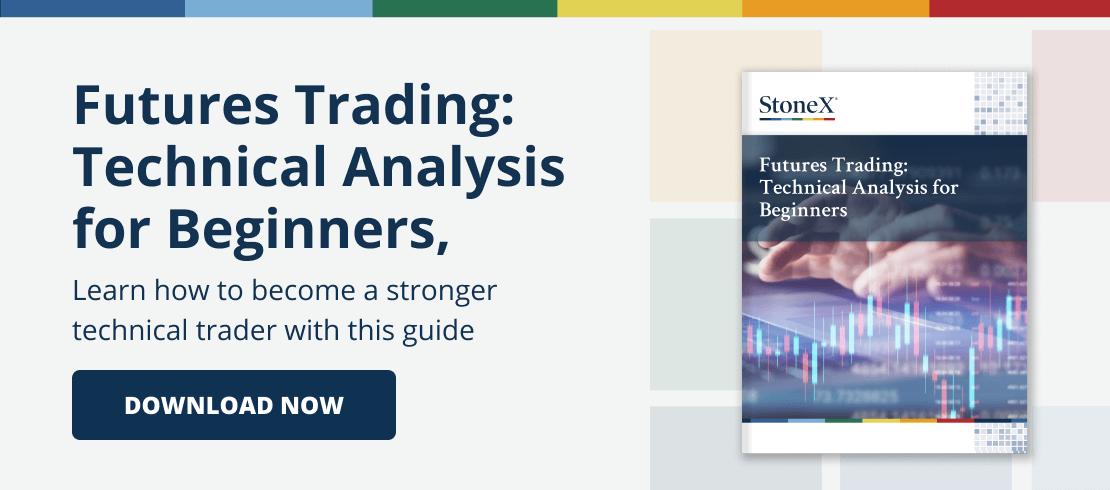Line Oscillator
This study is a combination of two different studies. The first set of calculations compute a simple oscillator. The second part computes a simple moving average of the oscillator. You must specify two values for the moving averages to calculate the oscillator. Next, a third value is specified for a moving average of the oscillator. The application computes the values and displays two lines on the chart.
Trading signals occur whenever the two lines cross. It is a relatively sensitive indicator and works well for intraday charts and trading, but the study generates valid trading signals for any chart type available within the FutureSource software system.
Trading signals for this study use a crossover system. If the oscillator crosses from above the moving average to below the moving average of the oscillator, establish a short position. Conversely, if the oscillator crosses from below to above the moving average of the oscillator, establish a long position.
Caution: The order of the first two moving averages is important. The specified length of the first moving average should not exceed the specified length of the second moving average. That inverts the oscillator which inverts the trading signals, i.e., sell signals become buy signals and buy signals become sell signals. To avoid this problem, always specify a smaller value for the first moving average than for the second moving average. For example, the values of 5, 10, and 5 are consistent with the trading rules outlined above. Values of 10, 5, and 5 are not.
Properties
Period1. The number of bars in a chart, used for the first Moving Average. If the chart displays daily data, then period denotes days; in weekly charts, the period will stand for weeks, and so on. The application uses a default of 6.
Period2. The number of bars in a chart, used for the second Moving Average. If the chart displays daily data, then period denotes days; in weekly charts, the period will stand for weeks, and so on. The application uses a default of 21.
Difference. The period of the outer Moving Average for the Oscillator. The application uses a default of 6.
Aspect: The Symbol field on which the study will be calculated. Field is set to “Default”, which, when viewing a chart for a specific symbol, is the same as “Close”.
Interpretation
The line oscillator study is a very clean and easy-to-use trading tool. The buy/sell signals are easily understood and are quickly spotted on the chart. Once a position is established, the line oscillator rides with the predominant market trend.
The tool is not perfect, but it does generate reliable results. It sometimes reverses a position too quickly. Likewise, it has a tendency to whipsaw in sideways markets.
View Other Technical Analysis Studies
- Bollinger Bands
- Commodity Channel Index
- Crack Spread
- Crush Spread
- Default
- Directional Movement Index
- Envelope
- Exponential Moving Average
- Exponential Oscillator
- High Low Moving Average
- Highest High / Lowest Low
- Historic Volatility
- Keltner Channel
- Least Squares Linear Regression
- Line Oscillator
- Momentum
- Moving Average
- Moving Average Convergence Divergence
- Moving Standard Deviation
- Open Interest
- Oscillator
- Parabolic Stop and Reversal
- Rate of Change
- Relative Strength Index
- Smoothed Moving Average
- Smoothed Oscillator
- Stochastic
- Variable Moving Average
- Volume
- Volume and Open Interest
- Weighted Close
- What is the Slow Stochastic Oscillator?
- Williams’ %R

